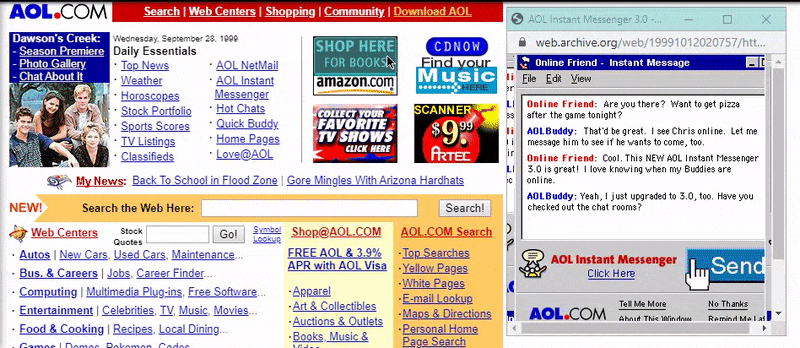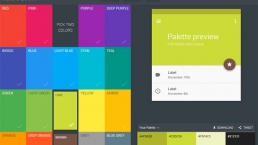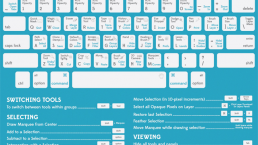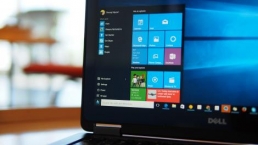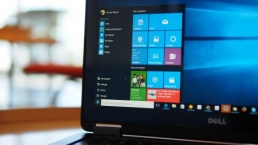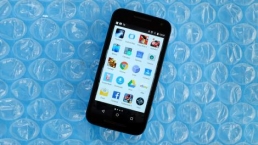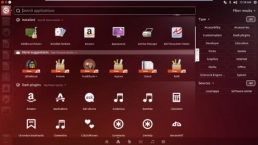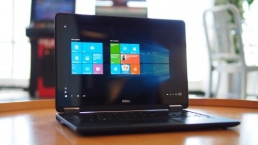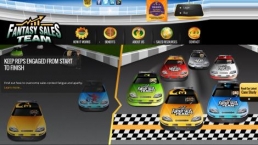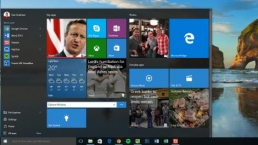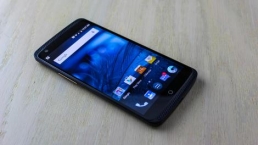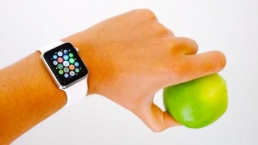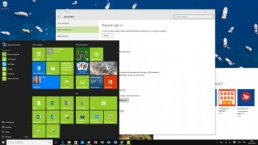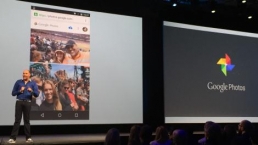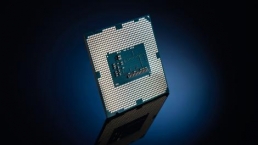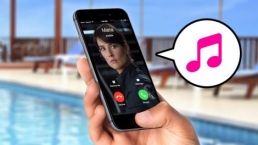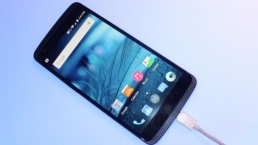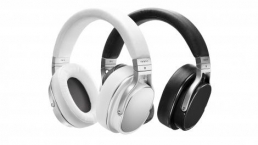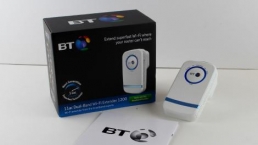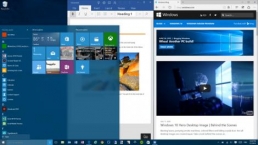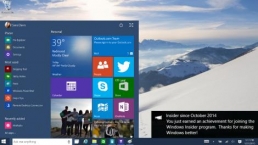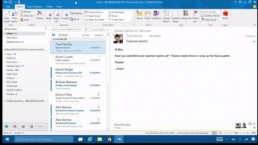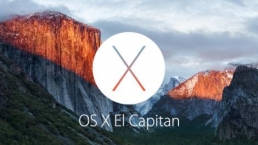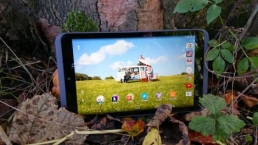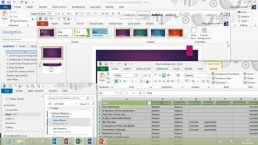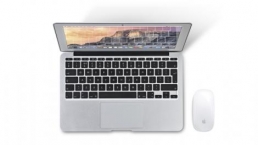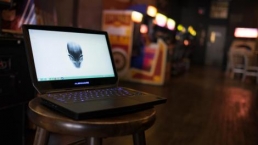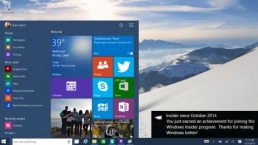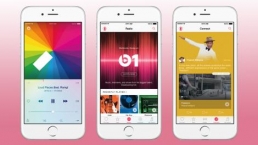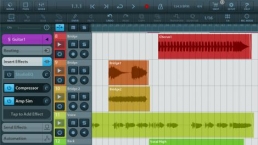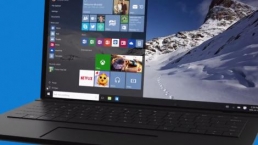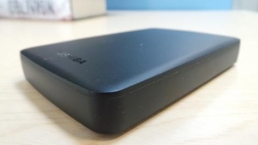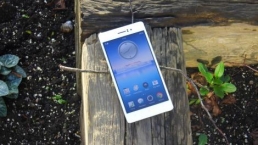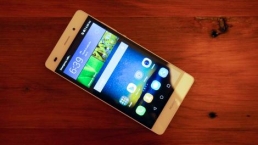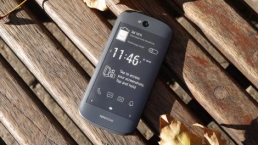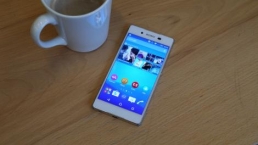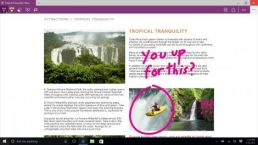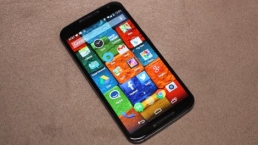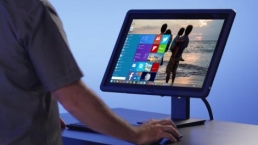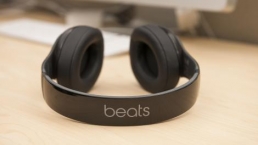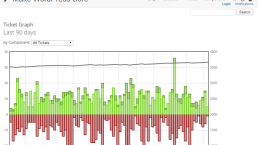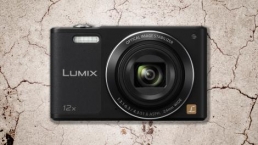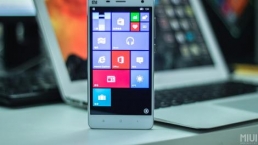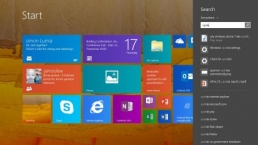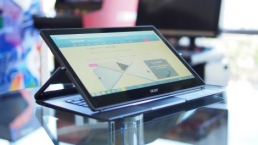
Introduction, design and fitness metrics
Fitbit Surge is the fitness tracker that has so many new features, the start-up company behind it calls it a “superwatch” next to the more normal Fitbit Charge and Fitbit Charge HR.
There’s good reason for that label. The final version I tested has built-in GPS, a heart-rate monitor and real-time workout data, all fan-requested capabilities that raise the price.
It’s certainly a step up from the Fitbit Force that was recalled for causing skin allergies and never saw its promised smartwatch functionality, though a few more rashes have been reported.
At $250 (£200, AU$350), Fitbit Surge reclaims lost territory and squares off against just as pricey fitness trackers, like the Basis Peak, and pricier ones, like the Garmin Forerunner 920XT.
Yes, its specs make it the most powerful Fitbit yet, but is it ahead of this stepped-up competition or gym class-awkward among its brawnier peers? Time to put it through my paces.
Design and display
Designed for workout performance, the Fitbit Surge fastens a noticeably larger LCD display to your wrist, and it’s able to easily cycle through multiple stats. Gone is the single-line OLED.

This backlit, always-on interface allows you to keep tabs on your steps, miles, active minutes and heart rate on a black-and-white, 1.25-inch screen.
Fitbit Surge upgrades to a touchscreen, and puts three physical buttons at your fingertips. It’s just more control to set everything from workout timers to GPS tracking to music controls.
The display is not in color and doesn’t fit as much information on one screen like the Garmin Forerunner 920XT, but now there’s no need to cycle through by pressing a single, tiny button.
I do wish that the Fitbit Surge included an option to cycle back to the current time after a while – and came with additional faces besides the four preinstalled watch faces to make the watch portion more relevant. An update could easily fix these oversights.

Tucked underneath the watch band is an optical heart-rate monitor and at ends of the straps is a strong wristwatch clasp that is easier to fasten than Fitbit’s usual two-pronged approach.
I nearly lost my Fitbit Force in a parking garage before driving 30 minutes away and then 30 minutes back to fetch it – all because of that previous ill-conceived design.
The new watch clasp is two Fitbit-sized steps in the right direction. It’s also available on the Fitbit Charge HR, but not the Fitbit Charge, so avoid that version if you tend to lose things.

While the Fitbit Surge functionality is more advanced, the square look and bigger size is akin to a dated, ’80s digital watch. It’s not fashionable, yet stands out more than previous Fitbits. It doesn’t help that it comes in only black, with blue and tangerine “coming soon.”
At its thickest point, the watch case is half an inch thick off the wrist and its strap is an inch wide. That’s about 1.5 times wider than the Fitbit Charge HR band and tough to hide.
The large, rubber-coated lugs at the top and bottom of the Fitbit Surge make tucking it into a shirt sleeve an extra workout Fitbit failed to advertise.
Fitbit metrics
Fitbit Surge now has a total of eight sensors crammed into its large frame, which, along with the LCD touchscreen, accounts for its expanded size.

This means it can track all sort of movements beyond a fitness gadgets’ routine metrics of steps, distance traveled and calories burned.
An altimeter, for example, is here to monitor how many floors you’ve climb in a day. That’s a stat that’s not available in all Fitbits, including the popular Fitbit Flex.
GPS is a completely new sensor to the Fitbit family. It can map your runs using Google Maps while generating step-by-step graphs for elevation, pace, heart rate and calories burned.

The best part is that Fitbit Surge’s satellite tracking works without your phone. You can leave that at home, a feature that’s not available in the new Apple Watch.
There’s something motiativing about reviewing your entire run laid out on a familiar overhead map and trying to best it the next time. You know you need to push it at certain landmarks.
Fitbit Surge’s GPS tracking isn’t the most accurate I’ve tested, with noticeable smoothing around corners and, at times, off-track routes that are a street and a half over.

All is not lost, however, as these GPS errors are few and far between. More often, I found Fitbit’s always-inflated step counts to push me to my 1,000 steps goal faster than expected.
My higher-than-normal step count did stay consistent. That made day-to-day goal-beating just as important and at least kept me consistent with my friends and family wearing older Fitbits.
Run tracking, without or without GPS, can be initiated right from the watch, so there’s no need to go to the app screen or press a secret pattern of buttons to get started.

The full list of exercise shortcuts are weights, elliptical, spinning, yoga, workout, stair climber, circuit training, bootcamp, kickboxing, tennis golf, walking and, yes, even martial arts.
A post-launch Fitbit Surge firmware update has been announced in order to bring bike tracking to that list. The new software will also bring Multi-Tracker Support so you can wear as many Fitbits as you want.
Needless to say, I never felt robbed of fitness tracking modes with the Fitbit Surge. The app also has a menu for food planning, but it remain cumbersome to track and is worthless.
All of the collected data syncs to the Fitbit app as well as an easier-to-study web interface, a bonus that the mobile-only Jawbone Up products don’t offer.
What’s it like as a running watch?
As running watches go, the Fitbit Surge is fairly standout in design. Hailing from somewhere in the Apple direction, it’s a stylish wrist piece in it’s own right, hailing from a family of consistently- styled bands and trackers.
The tracking element has been dragged across to the Surge, along with GPS and HR tracking to give you a fuller picture of your performance.
It’s immediately obvious that this is more of a fashion item rather than a hardcore ‘ultramarathon’ tracker, which is by no means a bad thing.
Out of the box the Surge impresses with the speed of setup. Just charge, slap on wrist, hit the ‘Run’ option in the menu, confirm Free or Treadmill run (GPS on or off) and crack on.
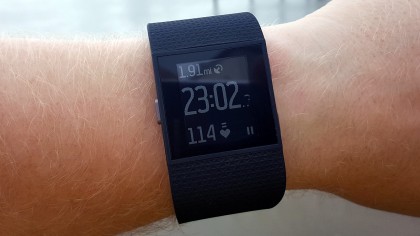
The strap is a traditional strap and buckle affair allowing enough play for the HR sensor to read correctly, and stays neatly put in use.
The slightly canted screen makes glancing at stats mid-run a pleasure, and the slightly rounded contour of the back is comfy enough for long sessions.
The ‘quick start’ button let’s you skip the ‘standing on the pavement staring at a GPS icon’ bit, which is nice.
The GPS itself picks up very rapidly indeed, getting a lock seconds after hitting the open air even in crowded central London.
We liked the vibrate alerts for pause/start and GPS lock, and if you’re looking for other sports to track there’s a plentiful selection on tap, from ‘hiking’, ‘weights’, ‘elliptical’, through to ‘spinning’, ‘yoga’ and a mysterious ‘workout’, the latter intended as a catchall.

While running most of the screen real estate is fixed to distance and overall time, with just the bottom bar being swipeable between HR, average pace, pace, clock, steps, calories.
For a smartwatch or fitness tracker that’s fine, but for a pure running watch it’s a little weak. The sensitivity of the screen to swipes seems variable, possibly due to the small area involved. The upshot is it’s not easy to skip between stats on the move.
Heart Rate zone training is especially fiddly – it is possible to see which one you’re currently operating in via a system of tiny dots, but it’s not that easy to read on the move. It is possible to create HR zones of your own instead of using the defaults, (create in app or PC then sync), but you’ll have to keep checking obsessively to stay on track.
You can receive call and text notifications while running, hit the top ‘action button’ to view alerts, home button to dismiss, and you can even control iOS music by double-pressing the Home button. However, there’s no social pestering, and no calendar alerts, which is a double-edged sword in connectivity terms.
Accuracy wise the HR monitor is a mixed bag – tested back-to-back against a Suunto HR chest strap on one occasion it spent the first 2k or the run varying around 10-5BPM out of sync, while we fiddled with the position and strap tightness. Finally it settled down to track the chest belt accurately, albeit on a slight delay.

However, removing the Surge and replacing it triggered the same behaviour, in spite of our previous experience in positioning etc. Once setup correctly it’s accurate enough, but getting that setup seems a little hit and miss, and if you’re not in the habit of running with a chestbelt as a control you’ll not know it’s out of whack.
The GPS tracked us accurately, on the upside, and the Fitbit step counter algorithm was as generous as ever, with us hitting our 10k target before lunch some days.
Heart rate monitor, sleep and smartwatch features
Coupled with the runner-friendly GPS feature, the Fitbit Surge has a heart-rate monitor that constantly tracks your heartbeat for what the company calls a “PurePulse.”

Really, it’s an optical heart rate monitor that sits on the underside of the watch and reflects a pair of green LEDs off of your skin to calculate changes in blood volume.
This HRM technology is no different what’s found in the Fitbit Charge HR, which keeps tabs on your beats per minute. But the Surge does have a helpful trailing BPM indicator on the LCD.
And it’s wholly better than the heart monitors found in earlier fitness trackers, like the Withings Pulse O2. Those forced users to pause to calculate their heart rate.

Fitbit Surge’s heart rate monitor constantly measures your beats per minute and is accurate unless you’re extremely active. Its does a better job with that all-important resting heart rate.
Of course, I’ve always found the chest-mounted Polar Smart Heart Rate Sensor tell the truth vs any wrist-worn HRM. But as an all-in-one solution, this Fitbit works fine in most conditions.
Its always-on LCD also fixes the problem we had with the Fitbit Charge HR heart rate monitor. That version’s display went to sleep, complicating running and actively watching your BPM.
Sleep tracking
Sleep tracking, when it works, is a bonus feature that’s just as important as any wide-awake health metric. The problem is that it doesn’t always work in fitness trackers.

Jawbone Up24 is the perfect example. It logs fairly accurate wake/light sleep/deep sleep stats for us, but too often we forget to set it to the sleep mode. Or forget to wake it in the morning.
Fitbit Surge remedies that, along with the Fitbit Charge and Fitbit Charge HR, with automatic sleep detection. It starts logging sleep within minutes of dozing off.
It sure beats having to set the band into sleep mode with a long press of a button. That was always a little backwards and now it’s fixed. The only thing you need to set is the convenient silent alarm that vibrates to wake you and not the person next to you.
Sadly, Fitbit is known for providing a very basic sleep timeline: asleep in blue, restless in aqua and awake in pink. Worse, Fitbit Surge’s patterns don’t always reflect other trackers.
![]()
I found it to be harder to read my overly simplistic sleep timeline vs the minute-by-minute sleep analysis provided by the Jawbone Up24 and Basis Peak sleep tracker.
What the Fitbit line really needs is a new way of displaying the sleep tracking data it collects. Its scrunched-up timeline is hard to read, so the automatic sleep detection is less meaningful.
Fitbit Surge’s sleep tracking feature is a fantastic idea, one that’s just as important as steps, but it doesn’t follow through with anything that can be considered accurate or helpful.
Smartwatch features
Fitbit Surge comes through with overdue smartwatch capabilities in a big way, thanks to its oversized square display.
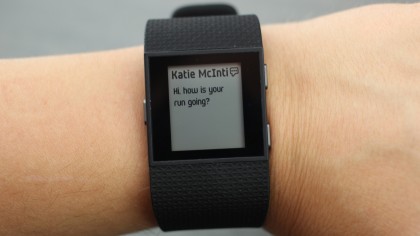
This shows a scrolling Caller ID from incoming calls and SMS alerts that can be read in full. Is a call or text worth pulling your phone out of your pocket or should you keep on running?
The Fitbit Surge solves that problem and also gives you control over your mobile music with a few swipes or taps on the new wristwatch.

Double tapping the left button brings up a hidden menu for interfacing with your phone’s music. I used Google Play Music and could skip tracks, pause and play music.
Music playback did require enabling Bluetooth Classic, which was confusing at first and drains the battery quick. But it was effective once I re-synced the watch to my phone.
Just don’t expect to store music on the watch itself. Fitbit Surge is large enough and doesn’t need internal storage to make it even bigger.
Fitbit Surge compatibility
Chances are, if you own a modern day smartphone, Fitbit Surge works with it. That’s because the necessary app is compatible with iOS 8, Android and Windows Phone handsets.

Fitbit is the first mainstream wearable manufacturer to invite Microsoft’s loyal customers into the fitness stats-syncing fold, and it actually goes a step further on Windows Phone 8.1.
Testing it out on my Nokia Lumia 830, I was able to tell Cortona to log food and activities with the sound of my voice. Saying “Fitbit, I ate a salad for lunch” searched the database of 350,000 foods.
This would make Microsoft’s platform the ideal choice for Fitbit users, but food logging is still too complicated in the end. I was forced to describe the salad and its size to a nauseating degree.
The Fitbit ecosystem is all-around more inclusive except when it comes to Apple Health. Sadly, the fitness-focused startup as opted out of syncing its data with iPhone’s wellness app.
Waterproof, battery life and verdict
Fitbit Surge is as waterproof as a smartwatch gets by matching the Pebble Time and Pebble Time Steel, according to the official specs. It’s listed at 5ATM, okay for a depth of 50 meters or 164 feet.

However, confusingly, the company still says while “it’s rain and splash proof and can stand up to the sweatiest workout,” owners should “remove before showering or swimming.”
I didn’t have any problem submerging my Fitbit Surge for a few minutes. It didn’t brick my $250 gadget and will almost certainly survive lengthy, sweat-filled workouts or heavy rain.
Fitbit Surge battery life
Fitbit Surge excels in a lot of areas, but it falls behind its predecessors when it comes to battery life. That’s expected given its large black-and-white LCD and new GPS capabilities.
The problem is that Fitbit promises its new “superwatch” can last seven days with heart rate monitoring and activity tracking enabled. It advises turning off GPS and music controls.

My Surge didn’t live up to that stamina in tests. It gave me about four and a half days between charges before it quit, even when minimally using its GPS capabilities during the week.
Given the Apple Watch, every Android Wear watch and my phone require daily charging, that’s more than acceptable. It takes about an hour and a half to recharge a Surge.
What’s infuriating is that Fitbit Surge uses a proprietary charger – one that’s different from the two other recently released Fitbits.

At first, I was excited to see that the Fitbit Charge used the same proprietary USB charger as the Fitbit Force. I had two of the same charger.
Then I got the Fitbit Charge HR, which had a slightly different charger, and then the Fitbit Surge, which had its own unique charger. What?
Yes, I now have three brand new Fitbits with three different chargers. The company lost its chance at creating a ubiquitous fitness charger among its ecosystem.

We liked
This is, without a doubt, the most powerful Fitbit yet. It’s the best of its brand, thanks to the ability to track GPS-mapped runs without a phone, control music on the run and check your heart rate in real time.
There’s a lot going on within this sensor-filled fitness tracker, and it has a 1.25-inch display to prove that all the metrics are working at the same time your blood is pumping. Best of all, it syncs with newer Windows phones in addition to iOS and Android devices.
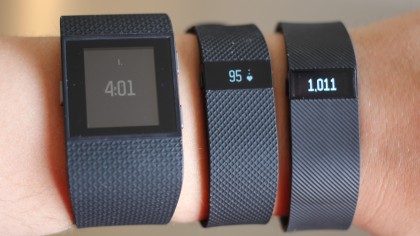
We disliked
Fitbit Surge tries to be a jack-of-all-trades, master of “run,” but it falls short in every way. It’s not as accurate as the Garmin’s top-tier fitness tracker and not as subtle as an activity band. It’s big, bulky and doesn’t have all of the premium features to back up its size.
Its sleep tracking capabilities haven’t evolved, the steps count is still inflated and the fact that this is the third recent Fitbit with the third proprietary charger is a joke. Why must they all be just a little bit different and incompatible with each other? I’d also ask for a color e-paper display instead of a black-and-white LCD, but the battery life is already shorter than advertised.
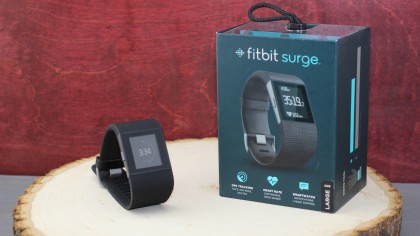
Final verdict
Fitbit Surge is meant for budget-conscious power users who are in need of a smarter running accessory. In this way, it runs laps around Fitbit’s more casual wearables, like its Fitbit Flex or Fitbit Charge, thanks to GPS-mapped runs, basic music controls and smartwatch-like notifications.
The catch is that Surge is still designed to be worn on a daily basis. That doesn’t work out, because it’s shaped like a clunky running watch. It’s significantly bigger than every other Fitbit and doesn’t blend in with normal wear.
That’s the price of having a built-in GPS, a touchscreen interface, a heart-rate monitor and automatic sleep tracking. Fitbit Surge is set up to fill the void between a fitness tracker and a real running watch. It does that, but is only recommended if you can’t afford the more reliable Garmin Forerunner 920XT.
![]()
Related Posts
December 6, 2021
7+ Web Design Trends for 2022: Which Will You Use?
December 6, 2021
The 10 Best WordPress Booking Plugins to Use On Your Website
December 6, 2021
How to Use a Web Cache Viewer to View a Cached Page
November 6, 2021
10 Modern Web Design Trends for 2022
November 6, 2021
Best Free SSL Certificate Providers (+ How to Get Started)
November 6, 2021
How to Design a Landing Page That Sends Conversions Skyrocketing
November 6, 2021
What Are the Best WordPress Security Plugins for your Website?
October 6, 2021
Your Guide to How to Buy a Domain Name
October 6, 2021
How to Build a WordPress Website: 9 Steps to Build Your Site
September 6, 2021
10 Best Websites for Downloading Free PSD Files
September 6, 2021
HTML5 Template: A Basic Code Template to Start Your Next Project
September 6, 2021
How Much Does It Cost to Build a Website for a Small Business?
September 6, 2021
A List of Free Public CDNs for Web Developers
September 6, 2021
6 Advanced JavaScript Concepts You Should Know
August 6, 2021
10 Simple Tips for Launching a Website
August 6, 2021
25 Beautiful Examples of “Coming Soon” Pages
August 6, 2021
10 Useful Responsive Design Testing Tools
August 6, 2021
Best-Converting Shopify Themes: 4 Best Shopify Themes
July 6, 2021
What Is Alt Text and Why Should You Use It?
July 6, 2021
24 Must-Know Graphic Design Terms
June 6, 2021
How to Design a Product Page: 6 Pro Design Tips
April 6, 2021
A Beginner’s Guide to Competitor Website Analysis
April 6, 2021
6 BigCommerce Design Tips For Big Ecommerce Results
April 6, 2021
Is WordPress Good for Ecommerce? [Pros and Cons]
March 6, 2021
Make Websites Mobile-Friendly: 5 Astounding Tips
March 6, 2021
Shopify vs. Magento: Which Platform Should I Use?
March 6, 2021
Top 5 Web Design Tools & Software Applications
February 6, 2021
Website Optimization Checklist: Your Go-To Guide to SEO
February 6, 2021
5 UX Design Trends to Dazzle Users in 2021
February 6, 2021
What Is the Average Page Load Time and How Can You Do Better?
February 6, 2021
Choosing an Ecommerce Platform That Will Wow Customers
February 6, 2021
7 Best Practices for Crafting Landing Pages with Forms
February 6, 2021
7 B2B Web Design Tips to Craft an Eye-Catching Website
January 6, 2021
Mobile-Friendly Checker | Check Your Site’s Mobile Score Now
January 6, 2021
8 Tips for Developing a Fantastic Mobile-Friendly Website
December 6, 2020
How to Add an Online Store to Your Website [4 Ways]
December 6, 2020
5 UX Design Tips for Seamless Online Shopping
November 6, 2020
Ecommerce Website Essentials: Does Your Site Have All 11?
November 6, 2020
5 Small Business Website Essentials You Need for Your Site
November 6, 2020
Your Website Redesign Checklist for 2020: 7 Steps for Success
May 1, 2020
Psychology of Color [Infographic]
April 21, 2020
How to start an online store that drives huge sales
January 3, 2020
5 Lead Generation Website Design Best Practices
March 6, 2019
6 Reasons You Should Redesign Your Website in 2019
March 6, 2019
7 Web Design Trends for 2019
February 19, 2019
Who owns the website/app source code, client or developer
February 7, 2019
Don’t Let Your Domain Names Expire in 2019
January 8, 2019
2019 Website Development Trends To Note
October 6, 2017
How Web Design Impacts Content Marketing
October 6, 2017
How to Choose a Navigation Setup
August 6, 2017
Why User Experience Matters to Marketing
July 6, 2017
5 Ways Web Design Impacts Customer Experience
September 6, 2016
How to Learn Angular
September 6, 2016
The Excuses for Not Having a Website (Infographic)
September 6, 2016
How to Build an Award-Winning Web Design Team
September 6, 2016
13 Free Data Visualization Tools
August 6, 2016
How Selling Pastries Helped Us Design a Better Product
August 6, 2016
11 Sites to Help You Find Material Design Inspiration
July 4, 2016
How to change free wordpress.com url
April 6, 2016
The 5 Best Free FTP Clients
April 6, 2016
7 Free UX E-Books Worth Reading
March 6, 2016
Can Handwritten Letters Get You More Clients?
December 10, 2015
Star Wars Week: How to create your own Star Wars effects for free
December 6, 2015
20 "Coming Soon" Pages for Inspiration
December 6, 2015
6 Free Tools for Creating Your Own Icon Font
December 6, 2015
9 Useful Tools for Creating Material Design Color Palettes
November 6, 2015
20 Free UI Kits to Download
November 6, 2015
50 Web Designs with Awesome Typography
November 6, 2015
When to Use rel="nofollow"
November 6, 2015
7 Free Books That Will Help You Become More Productive
November 6, 2015
50 Beautiful One-Page Websites for Inspiration
November 6, 2015
Circular Images with CSS
October 6, 2015
Lessons Learned from an Unsuccessful Kickstarter
October 6, 2015
5 Games That Teach You How to Code
October 6, 2015
Cheatsheet: Photoshop Keyboard Shortcuts
October 6, 2015
An Easy Way to Create a Freelance Contract for Your Projects
October 6, 2015
50 Design Agency Websites for Inspiration
September 29, 2015
JB Hi-Fi shutting the book on ebooks
September 24, 2015
Opinion: Quick, Quickflix: It's time to give yourself the flick
September 24, 2015
New Star Wars 360-degree video is among first on Facebook
September 21, 2015
Apple purges malicious iPhone and iPad apps from App Store
September 12, 2015
Apple's new Live Photos feature will eat up your storage
September 12, 2015
The latest Windows 10 Mobile preview has been delayed
September 12, 2015
IBM buys StrongLoop to add Node.js development to its cloud
September 8, 2015
Fake Android porn app takes your photo, then holds it ransom
September 6, 2015
50 Restaurant Websites for Inspiration
September 6, 2015
Zero UI — The Future of Interfaces
September 6, 2015
50 Beautiful Websites with Big Background Images
September 6, 2015
Infographic: 69 Web Design Tips
September 6, 2015
Free Windows 10 Icons
September 2, 2015
Instagram turns itself into a genuine messaging service
August 11, 2015
In Depth: How Microsoft taught Cortana to be more human
August 11, 2015
Windows 10 price, news and features
August 11, 2015
Windows 10's broken update introduces endless reboot loop
August 11, 2015
Windows 10 races to 27m installs
August 11, 2015
Windows 10 IoT Core gets first public release
August 10, 2015
iOS Tips: How to backup iPhone to an external drive
August 10, 2015
Windows 8.1 RT finally getting Windows 10 Start Menu
August 10, 2015
How to use Windows Hello
August 10, 2015
Review: Moto Surround
August 10, 2015
Review: Moto G (2015)
August 9, 2015
8 of the best free VPN services
August 8, 2015
Use Firefox? Mozilla urges you update ASAP
August 7, 2015
Mac Tips: Apple Mail: How to remove the Favorites Bar
August 7, 2015
How to make the OS X dock appear faster
August 7, 2015
Review: BQ Aquaris E45 Ubuntu Edition
August 7, 2015
Review: Acer Liquid Jade Z
August 6, 2015
How to reinstall Linux
August 6, 2015
How to reinstall Windows
August 6, 2015
Updated: Apple Music: release date, price and features
August 6, 2015
Social News Websites for Front-End Developers
August 6, 2015
10 Free JavaScript Books
August 6, 2015
50 Beautiful Blog Designs
August 6, 2015
Animated SVG Pipes Effect
August 6, 2015
Launching Your First App
August 5, 2015
Windows 10 goes freemium with paid apps
August 5, 2015
Updated: Week 1 with Windows 10
August 5, 2015
Mac Tips: How to manage Safari notifications on Mac
August 5, 2015
Microsoft Sway may kill the PowerPoint presentation
August 4, 2015
Microsoft gives Outlook on the web a new look
August 4, 2015
Mac OS X vulnerable to new zero-day attack
August 4, 2015
Windows 10 users warned of two scams
August 4, 2015
Microsoft's Docs.com is now available to everyone
August 3, 2015
Mac Tips: How to edit the Favorites sidebar on Mac
August 3, 2015
Updated: Windows 10 price, news and features
July 29, 2015
Review: HP ProDesk 405 G2
July 29, 2015
Hands-on review: HP Elite x2 1011
July 29, 2015
Hands-on review: Updated: Windows 10 Mobile
July 29, 2015
Review: Updated: Nvidia Shield Android TV
July 28, 2015
LIVE: Windows 10 launch: Live Blog!
July 28, 2015
How to prepare for your upgrade to Windows 10
July 28, 2015
Review: Updated: Windows 10
July 28, 2015
Review: Updated: HP Pro Tablet 608
July 28, 2015
Review: Heat Genius
July 28, 2015
Hands-on review: Moto X Play
July 28, 2015
Hands-on review: Moto X Style
July 28, 2015
Hands-on review: Moto G (2015)
July 28, 2015
Review: 13-inch MacBook Air (early 2015)
July 28, 2015
Hands-on review: OnePlus 2
July 28, 2015
Review: LG 65EG960T 4K OLED
July 28, 2015
Mac Tips: How to share printers on Mac
July 27, 2015
Apple Music's arrival hasn't opened Pandora's box
July 26, 2015
Review: Garmin Swim
July 25, 2015
How to merge OS X contacts into an existing list
July 25, 2015
Hands-on review: UPDATED: ZTE Axon
July 24, 2015
Mac Tips: How to zoom in on a Mac
July 24, 2015
What Windows 10 means for the enterprise
July 24, 2015
Review: JBL Charge 2 Plus
July 24, 2015
Review: Acer Aspire S7
July 24, 2015
Review: Updated: Canon G3 X
July 24, 2015
Review: Updated: iPad Air 2
July 24, 2015
Review: Thinksound On1
July 24, 2015
Review: Asus Chromebook Flip
July 24, 2015
Review: Garmin Forerunner 225
July 23, 2015
Review: Garmin nuvi 68LM
July 23, 2015
Review: Samsung Galaxy S6 Active
July 23, 2015
Review: Bowers and Wilkins P5 Wireless
July 23, 2015
Review: Dell XPS 15 (2015)
July 21, 2015
Review: Fuji S9900W
July 21, 2015
Review: UE Roll
July 21, 2015
Hands-on review: Ubik Uno
July 20, 2015
Review: Samsung HW-J650
July 20, 2015
Updated: 40 best Android Wear smartwatch apps 2015
July 20, 2015
Review: Acer Chromebook C740 review
July 20, 2015
Review: Huawei Talkband B2
July 20, 2015
Review: Dell Venue 10 7000
July 20, 2015
Review: Intel Core i7-5775C
July 17, 2015
Mac Tips: How to delete locked files on Mac
July 17, 2015
Review: Pebble Time
July 16, 2015
Microsoft just made Windows XP even less secure
July 16, 2015
Windows 8.1 RT is getting an update this September
July 16, 2015
OS showdown: Windows 10 vs Windows 8.1 vs Windows 7
July 16, 2015
Review: Acer CB280HK
July 15, 2015
Windows 10 is ready for new laptops and PCs
July 15, 2015
Explained: How to take a screenshot in Windows
July 15, 2015
Office for Windows 10 appears in latest build
July 14, 2015
Review: ZTE Axon
July 14, 2015
Review: ViewSonic VP2780-4K
July 14, 2015
Hands-on review: SanDisk Connect Wireless Stick
July 14, 2015
Review: Oppo PM-3
July 14, 2015
Review: BT 11ac Dual-Band Wi-Fi Extender 1200
July 14, 2015
Review: Fuji X-T10
July 13, 2015
How to build an SEO strategy for your business
July 13, 2015
Review: Lenovo ThinkPad Yoga 15
July 13, 2015
Review: Audio-Technica ATH-MSR7
July 13, 2015
Review: Garmin NuviCam LMT-D
July 13, 2015
Review: Dell Inspiron 13 7000
July 13, 2015
Hands-on review: AstroPi SenseHAT
July 13, 2015
Hands-on review: EE Rook
July 13, 2015
Hands-on review: Updated: HTC Vive
July 12, 2015
Here's the ultimate software list for PC fanatics
July 10, 2015
How to use the new Photos app for Mac
July 10, 2015
Windows 10 Insider Preview Build 10166 available now
July 10, 2015
Splunk spends big on cybersecurity acquisition
July 10, 2015
Making Windows 10 apps just got a whole lot easier
July 10, 2015
Review: Lenovo LaVie Z 360
July 9, 2015
OS X El Capitan public beta available right now
July 9, 2015
Microsoft finally unveils Office 2016 for Mac
July 9, 2015
Review: Updated: Chromecast
July 9, 2015
Review: Updated: Tesco Hudl 2
July 9, 2015
Review: Lenovo ThinkPad E550
July 9, 2015
Review: Updated: Google Nexus 6
July 8, 2015
What you need to know about Windows Server 2016
July 7, 2015
Microsoft to hike enterprise cloud pricing
July 6, 2015
Hacking Team end up being totally 0wned
July 6, 2015
Review: HP Pro Slate 12
July 6, 2015
Review: Samsung 850 Pro 2TB
July 6, 2015
Review: Asus RT-AC87U
July 6, 2015
Review: Jawbone UP2
July 6, 2015
Reimagining the Web Design Process
July 6, 2015
50 Clean Websites for Inspiration
July 6, 2015
15 Free Books for People Who Code
July 6, 2015
Web Storage: A Primer
July 6, 2015
A Look at Some CSS Methodologies
July 3, 2015
6 Essential Mac Mouse and Trackpad Tips
July 2, 2015
How to install a third party keyboard on Android
July 2, 2015
Review: UPDATED: Asus Zenfone 2
July 2, 2015
Review: Alienware 13
July 2, 2015
Review: HP DeskJet 1010
July 1, 2015
5 issues we want Apple Music to fix
June 13, 2015
Cortana will get its own button on Windows 10 PCs
June 12, 2015
Windows 10 will come with universal Skype app
June 12, 2015
iPad music production: 18 Best apps and gear
June 12, 2015
Windows 10 all set for early enterprise struggle
June 12, 2015
Review: Garmin VIRB Elite
June 11, 2015
Review: Updated: Nvidia Shield Tablet
June 11, 2015
Review: Nokia Lumia 635
June 10, 2015
Microsoft brings more online tweaks to Office 365
June 10, 2015
Mac Tips: How to use Screen Sharing in Mac OS X
June 9, 2015
Hands-on review: Meizu M2 Note
June 9, 2015
Hands-on review: EE 4GEE Action Camera
June 9, 2015
Review: Toshiba 3TB Canvio external hard drive
June 9, 2015
Review: Olympus SH-2
June 8, 2015
Hands-on review: Updated: Apple CarPlay
June 8, 2015
UPDATED: iOS 9 release date, features and news
June 8, 2015
Review: Updated: Roku 2
June 8, 2015
Review: Updated: PlayStation Vue
June 8, 2015
Review: Dell PowerEdge R730
June 8, 2015
Review: Canon SX710 HS
June 7, 2015
UPDATED: iOS 9 release date, features and rumors
June 7, 2015
Review: Lenovo S20-30
June 6, 2015
Free Writing Icons
June 6, 2015
15 CSS Questions to Test Your Knowledge
June 6, 2015
The Best CSS Reset Stylesheets
June 6, 2015
How CSS Specificity Works
June 5, 2015
'Delay' is a new feature in Windows 10
June 5, 2015
Review: Beyerdynamic Custom One Pro Plus
June 5, 2015
Latest SEO Marketing tools
June 5, 2015
Review: Nvidia Shield Android TV
June 5, 2015
Review: Honor 4X
June 5, 2015
Review: In Depth: Oppo R5
June 3, 2015
Hands-on review: Huawei P8 Lite
June 3, 2015
How To: How to create eBooks on a Mac
June 3, 2015
Review: Updated: Tidal
June 3, 2015
Review: Canon 750D (Rebel T6i)
June 2, 2015
Review: Updated: Asus ZenWatch
June 2, 2015
Review: Alcatel OneTouch Idol 3
June 2, 2015
Review: Updated: Nokia Lumia 1520
June 2, 2015
Review: Updated: Yotaphone 2
June 2, 2015
Review: Updated: Nokia Lumia 625
June 2, 2015
Review: Creative Muvo Mini
June 1, 2015
Review: Acer TravelMate P645 (2015)
June 1, 2015
Hands-on review: Corsair Bulldog
May 29, 2015
In Depth: NetApp: a requiem
May 29, 2015
July is looking definite for Windows 10 release
May 29, 2015
Hands-on review: Google Photos
May 28, 2015
Mac Tips: The 16 best free GarageBand plugins
May 28, 2015
Review: Canon 760D (Rebel T6s)
May 27, 2015
Review: Lenovo Yoga 3 14
May 27, 2015
Hands-on review: Serif Affinity Photo
May 27, 2015
Review: Garmin Vivoactive
May 26, 2015
Review: Datacolor Spyder5 Elite
May 26, 2015
Hands-on review: Sony Xperia Z3+
May 26, 2015
Review: Epson BrightLink Pro 1410Wi
May 26, 2015
Review: Technics Premium C700
May 26, 2015
Review: Canon EOS M3
May 26, 2015
Review: Updated: HTC One M9
May 26, 2015
Review: Updated: Sony Xperia Z3 Compact
May 25, 2015
Review: Updated: New Nintendo 3DS
May 25, 2015
Updated: 50 best Mac tips, tricks and timesavers
May 25, 2015
Updated: Windows email: 5 best free clients
May 25, 2015
Instagram is planning to invade your inbox
May 25, 2015
Review: Updated: Foxtel Play
May 24, 2015
How Windows 10 will change smartphones forever
May 24, 2015
Review: Vodafone Smart Prime 6
May 24, 2015
Review: Updated: iPad mini
May 22, 2015
Office Now may be Cortana for your work life
May 22, 2015
Review: Updated: Lenovo Yoga 3 Pro
May 22, 2015
Review: Microsoft Lumia 640 LTE
May 22, 2015
Review: Updated: Fitbit Flex
May 21, 2015
Updated: Best free Android apps 2015
May 21, 2015
Review: Asus ZenBook Pro UX501
May 21, 2015
Review: Sennheiser Momentum In-Ear
May 20, 2015
Hands-on review: UPDATED: Asus Zenfone 2
May 20, 2015
OS X 10.11 release date, features and rumors
May 18, 2015
Updated: Best free antivirus software 2015
May 18, 2015
iPhone 6S rumored to launch as soon as August
May 18, 2015
Microsoft ready to pounce and acquire IFS?
May 17, 2015
5 of the most popular Linux gaming distros
May 16, 2015
Review: Acer Chromebook 15 C910
May 16, 2015
Review: Lenovo ThinkPad X1 Carbon (2015)
May 16, 2015
Review: Polk Nue Voe
May 16, 2015
The top 10 data breaches of the past 12 months
May 16, 2015
Hands-on review: Updated: LG G4
May 16, 2015
Review: Updated: Quickflix
May 16, 2015
Review: LG Watch Urbane
May 16, 2015
Review: Razer Nabu X
May 16, 2015
Hands-on review: Updated: Windows 10
May 16, 2015
Review: UPDATED: Moto X
May 16, 2015
Review: Updated: Moto G (2013)
May 12, 2015
Review: TomTom Go 50
May 12, 2015
Review: Updated: Moto G (2014)
May 12, 2015
Review: Garmin Vivofit 2
May 12, 2015
Review: Asus Transformer Book Flip TP300LA
May 11, 2015
Review: MSI GT80 Titan
May 11, 2015
Review: Monster SuperStar BackFloat
May 9, 2015
Review: Updated: Apple Watch
May 7, 2015
5 million internet users infected by adware
May 7, 2015
Review: Updated: New MacBook 2015
May 6, 2015
Android M will be shown at Google IO 2015
May 6, 2015
Review: Epson WorkForce Pro WF-4630
May 6, 2015
Review: Master & Dynamic MH40
May 6, 2015
How to Use Gulp
May 6, 2015
Getting Started with Command-Line Interfaces
May 6, 2015
What It’s Like to Contribute to WordPress
May 6, 2015
Ultimate Guide to Link Types for Hyperlinks
May 6, 2015
11 Things You Might Not Know About jQuery
May 5, 2015
Hands-on review: Updated: PlayStation Now
May 5, 2015
Review: Lenovo ThinkPad Yoga 12
May 5, 2015
Review: Updated: iPad Air
May 5, 2015
Review: Panasonic SZ10
May 5, 2015
Review: Updated: Fetch TV
May 4, 2015
Review: Cambridge Audio Go V2
May 3, 2015
Review: Lightroom CC/Lightroom 6
May 2, 2015
5 of the most popular Raspberry Pi distros
May 1, 2015
Review: PlayStation Vue
May 1, 2015
Hands-on review: Updated: Microsoft HoloLens
April 30, 2015
Build 2015: Why Windows 10 may not arrive until fall
April 29, 2015
The biggest announcements from Microsoft Build 2015
April 29, 2015
Hands-on review: TomTom Bandit
April 29, 2015
Hands-on review: EE Harrier Mini
April 28, 2015
Review: Samsung NX500
April 28, 2015
Hands-on review: LG G4
April 28, 2015
Review: Patriot Ignite 480GB SSD
April 28, 2015
Hands-on review: EE Harrier
April 28, 2015
Review: Linx 10
April 28, 2015
Review: 1&1 Cloud Server
April 26, 2015
Hands-on review: Acer Iconia One 8
April 25, 2015
How to run Windows on a Mac with Boot Camp
April 24, 2015
Dropbox Notes poised to challenge Google Docs at launch
April 24, 2015
Hands-on review: Acer Aspire E14
April 24, 2015
Hands-on review: UPDATED: Valve Steam Controller
April 24, 2015
Review: Acer Iconia One 7
April 23, 2015
Windows 10 just revived everyone's favorite PC game
April 23, 2015
Google opens up Chromebooks to competitors
April 23, 2015
Here's how Outlook 2016 looks on Windows 10
April 23, 2015
Hands-on review: Updated: Acer Liquid M220
April 23, 2015
Hands-on review: Acer Aspire Switch 10 (2015)
April 23, 2015
Hands-on review: Acer Aspire R 11
April 22, 2015
Review: Alienware 17 (2015)
April 22, 2015
Hands-on review: Updated: HP Pavilion 15 (2015)
April 21, 2015
This is how Windows 10 will arrive on your PC
April 21, 2015
Review: iMac with Retina 5K display
April 21, 2015
Review: Epson XP-420 All-in-One
April 18, 2015
Google Now brings better search to Chrome OS
April 17, 2015
Review: Epson Moverio BT-200
April 17, 2015
Review: Pentax K-S2
April 16, 2015
Updated: Android Lollipop 5.0 update: when can I get it?
April 15, 2015
Hands-on review: Updated: Huawei P8
April 15, 2015
Review: SanDisk Ultra Dual USB Drive 3.0
April 15, 2015
Review: Updated: LG G3
April 15, 2015
Review: Updated: LG G3
April 15, 2015
Review: Crucial BX100 1TB
April 13, 2015
iOS 8.4 beta reveals complete Music app overhaul
April 13, 2015
Linux 4.0: little fanfare for a tiny new release
April 13, 2015
Achievement unlocked: Microsoft gamifies Windows 10
April 13, 2015
Best Android Wear smartwatch apps 2015
April 13, 2015
Review: Acer Aspire R13
April 12, 2015
Review: TP-Link Archer D9
April 10, 2015
Microsoft's new browser arrives for Windows 10 phones
April 10, 2015
Review: LG UltraWide 34UC97
April 9, 2015
Office now integrates with Dropbox on the web
April 9, 2015
Now you can buy video games with Apple Pay
April 9, 2015
Updated: iOS 8 features and updates
April 9, 2015
Microsoft's stripped down Nano Server is on the way
April 8, 2015
Skype Translator gets even more features
April 8, 2015
Windows mail services hit by widespread outages
April 8, 2015
Review: UPDATED: Amazon Echo
April 8, 2015
Hands-on review: Dell Venue 10 7000
April 8, 2015
Review: Updated: OS X 10.10 Yosemite
April 7, 2015
Google's GMeet could kill teleconferencing
April 7, 2015
Is Redstone the first Windows 10 update?
April 7, 2015
Next peek at Windows Server 2016 due next month
April 7, 2015
Review: Acer Aspire Switch 11
April 7, 2015
Review: Adobe Document Cloud
April 6, 2015
Hands-on review: Updated: New MacBook 2015
April 6, 2015
Freebie: 100 Awesome App Icons
April 6, 2015
Six Revisions Quarterly Report #1
April 6, 2015
A Modern Approach to Improving Website Speed
April 6, 2015
Disable Text Selection with CSS
April 4, 2015
Review: Nikon D7200
April 3, 2015
Amazon Prime video now streams to any Android tablet
April 3, 2015
Review: Google Cardboard
April 3, 2015
Review: MSI WS60
April 2, 2015
Chrome users can now run 1.3 million Android apps
April 2, 2015
See Windows 10 Mobile running on an Android handset
April 2, 2015
Review: Mini review: Macphun Noiseless Pro 1.0
April 2, 2015
Review: Intel SSD 750 Series 1.2TB
April 2, 2015
Review: BenQ TreVolo
April 2, 2015
Hands-on review: Nikon 1 J5
April 1, 2015
Microsoft launches Windows 10 music and video apps
April 1, 2015
Review: mini review: Sony XBA-H1
December 19, 2014
Review: CoPilot Premium sat nav app
December 19, 2014




























































